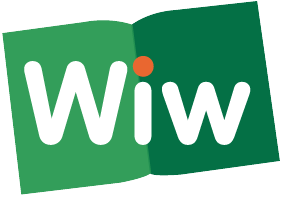 Whether you have an idea for a new product or would like to see changes made to your company dress code, at some point you will have to “put pen to paper” and write the proposal to present your idea to the decision makers in your organization in a more formalized way.
Whether you have an idea for a new product or would like to see changes made to your company dress code, at some point you will have to “put pen to paper” and write the proposal to present your idea to the decision makers in your organization in a more formalized way.
But where do you start?
Every organization and situation has its own unique situation or requirements but here’s a basic process to get started:
Define the Audience
Begin by considering who your audience is. Think through this process strategically as it affects how you write the proposal
Who?
Who will be reading your proposal? We typically think of these individuals as stakeholders: decision makers, influencers or those who will be impacted by your proposal. Should the email to the decision maker (like the CEO of your firm)? Or first to an influencer (like your supervisor), which will then be “forwarded” to the ultimate decision maker?
How will the decision be made?
Will the decision be made solely by the decision maker? Or will it be reviewed committee?
Context
Think about how will the decision maker be receiving this message? Is he or she expecting your idea? Or is this a message that will be coming “blind” with no forewarning? You may even want to consider the timing of your message: if you’re proposing new ideas that could increase sales, is it better to share your proposal at the end of the month (when an executive may be more likely to consider anything that will improve revenue)? Even the best of ideas may be seen as “just one more thing” or “one too many changes” if a company has already been struggling to manage major evolutions.
Also consider how the information will be delivered. Will the message need to be self-contained, with all of the facts included? Or will you be presenting your ideas verbally as well?
Take time to consider exactly who the audience is, what they will be expecting, and how detailed the proposal really needs to be in order to accomplish your goals. Don’t deluge them with details when that might only muddy the waters and delay decision because your audience has gotten lost in the details.
Understand the Background
Depending on the format of your proposal or situation, as well as the knowledge or experience with the topic the reader has, you may want to provide a brief sense of the history or background of the problem or situation in order to help the reader understand its context. The Background section can include:
- History of the problem
- Current situation
- Elements that have influenced or contributed to the situation
Focus on the Benefit
You’ve likely heard the old sales saying “focus on the benefits rather than the features.” For example, if you’re shopping for a new computer, you may not initially understand why 16Gb of memory is a good thing… But understanding that your computer has enough memory to handle complex programs, rich media, and video – all simultaneously – might be critical to your decision-making process when you’re in the market for a new computer.
The same is true of the solution (your proposal) you are “selling” to your reader (the decision maker). Focus on the benefits of your solution first – realizing that you may ultimately need to “get in the weeds” to help the decision maker see how the plan will be implemented.
State the Problem
This is obvious… right? Not always. There are many stories of RFPs and grant applications that have waxed on for pages without ever clearly stating exactly what is the problem they’re trying to solve.
A critical part of the problem statement includes what the impact of the problem is. Identifying what your problem’s impact is will help your reader determine how urgent and critical it is to solve the problem.
Propose Solutions
You may have an ideal solution for your problem… but try to provide a few equally realistic or viable alternatives to solving the problem, keeping in mind the realities of your organizational situation. For example, don’t propose a multi-million dollar tech solution when your firm is operating on a shoestring budget. Don’t propose a marketing plan that would require tripling the headcount for your marketing department.
Remember: Whether your proposal is a simple email or a 20-page document, all proposals have similar basic requirements: You are making a suggestion for a problem or idea. Using our five-step formula to develop a strategy will help ensure the best chance for success.
Want to learn more about writing better proposals? Check out our books (Amazon) and courses.
about any of our products or services.
 Visit us
San Francisco Bay Area
Visit us
San Francisco Bay Area
 Mail us
natasha@adcomdesigns.com
Mail us
natasha@adcomdesigns.com
 Call us
(510) 655-6477
Call us
(510) 655-6477

